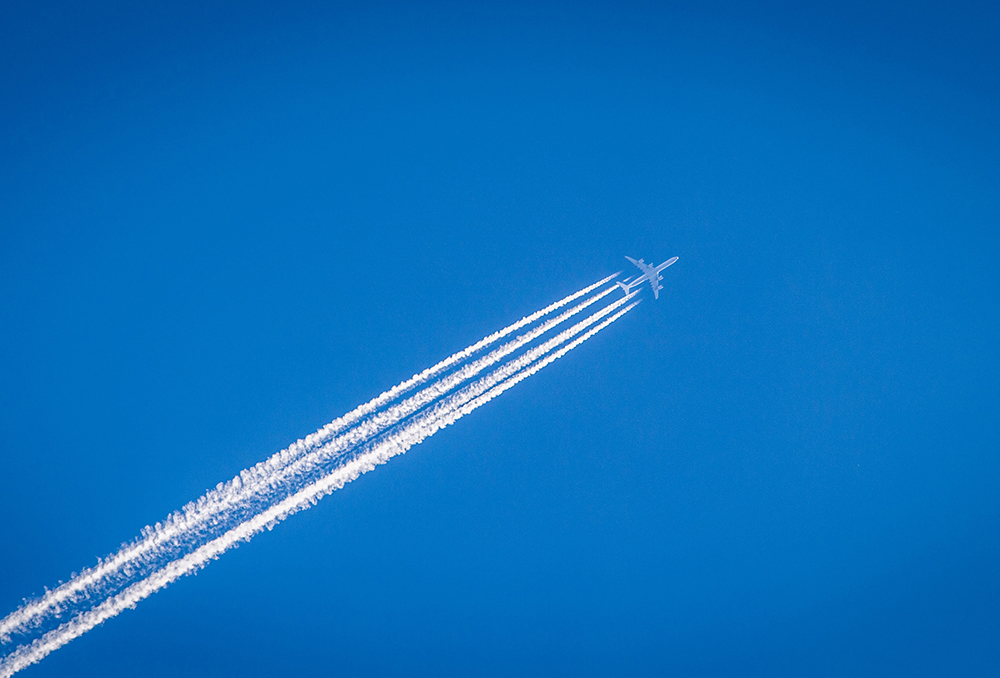
Tougher actions imperative to reduce aviation emissions
Carbon offsets, emission allowances and environment taxes – these current instruments are not enough to reduce airline climate emissions. A broad mix of tougher measures are needed according to transport researchers at KTH, who want to put more pressure on politicians and the aviation industry.

Aviation accounts for ten percent of the total climate emissions from consumers in Sweden. If the climate targets are to be reached, Jonas Åkerman , a researcher within strategic sustainability studies, claims air travel must be reduced by a third.
“This not only means that we must drive this issue internationally to gain powerful global instruments, but we also need national measures in the meantime, such as a flight tax and a requirement to use more biofuel,” he says.
In several research projects headed by Åkerman, researchers at KTH and Chalmers investigate opportunities for future sustainable long distance travel. The potential for new technology to reduce emissions is limited. On the other hand, tougher taxes and other financial levers can steer the aviation industry and travellers in a more climate-friendly direction.
Weak system
According to the researchers, current regulations are far from sufficient. On a global level, scope to tighten these is made more difficult due to international agreements to exempt air travel from taxation. Within the UN, countries round the world have reached agreement on Corsia, the Carbon Offsetting and Reduction Scheme for International Aviation. However, the scheme has been criticised as toothless and ineffective.
“It is difficult to verify the effects of carbon offsetting and even if it were to become as hoped for, the aims of Corsia have been set far too low - we are light years away from reaching the Paris Agreement goal of limiting global the temperature increase to below 2 degrees Celsius,” says Åkerman.
On an international level, he would rather see an expansion of the EU emissions trading system, where airlines within Europe can buy emission allowances for greenhouse gases. The number of emission allowances needs to be significantly reduced if we are to reach these climate goals, he argues. The Swedish flight tax ought to be increased at the same time:
“A national tax is needed temporarily, but when it becomes possible, this should be phased out and replaced by other instruments that are more accurately targeted. This could be a global tax on aviation fuel or a global trading system similar to the EU system.”
Change flight routes
Emissions that are not much spoken about, despite the fact they have almost as much impact on the climate, are high altitude emissions, in the form of contrails and thin cirrus clouds that are formed when steam in the exhaust gases meets the cold air.
Aviation accounts for 2–3 percent of energy-related carbon dioxide emissions globally – but if you include the high altitude effect, aviation climate emissions actually correspond to 4–5 percent. With the right measures, a high proportion of high altitude emissions can be overcome within 10-20 years, the researchers believe.
By changing flight routes such that a certain air space, depending on temperature and humidity, is not flown through, this high altitude effect can be substantially reduced. Flight paths, as a consequence of weather conditions, can need to be amended at short notice in any case.
“Technology-wise, resolving this is not difficult. The hard bit is organisationally – changing the air traffic rules and regulations to make them more flexible without compromising on safety,” says Åkerman.
Greater awareness
According to Åkerman, calculating the effects of different control instruments on climate emissions is not difficult. The challenge lies in persuading the various parties to commit to international agreements and to gain acceptance from the general public and decision-makers.
How popular would it be to increase taxes and charges? Many politicians promise the opposite in election campaigns.
“A few years ago, I would have said that acceptance of a tax on air travel is an obstacle. But there’s been a change. The Swedish flight tax was accepted without too much protest,” says Åkerman who also refers to the most recent statistics showing that for the first time in ten years, Swedes are flying less.
“To an extent, this is due to a greater awareness and a change in attitudes. The debate about emissions has had an effect. It will be interesting to see if this remains the case.”
Text: Christer Gummeson
Footnote: The research projects “Towards more climate neutral long distance travel by 2045” and “Innovations for sustainable long distance travel” are headed by Jonas Åkerman and financed by Vinnova.